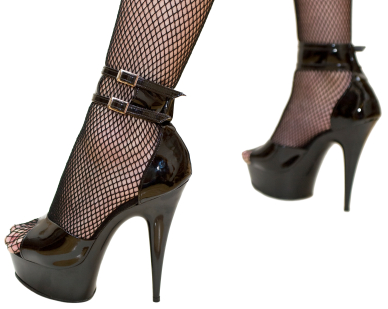
First, a note- I often worry that blogging more about things that bother me rather than fluffier posts about life and marketing will make me look like an old crank. I stopped worrying about that- as long as I’m providing a solution, such posts have value to some people, I hope. So here goes…
 Every once in a while as I flip through posts in Google Reader, I am assaulted over and over by images that offend me. By this I do not mean, shocking, inappropriate or obscene images. I do not mean ugly are provocative either. I mean bland. I mean images with only the most tenuous relation to the topic- or an all-too-obvious pun connecting them to the content. I mean… generic stock images and clip art.
Every once in a while as I flip through posts in Google Reader, I am assaulted over and over by images that offend me. By this I do not mean, shocking, inappropriate or obscene images. I do not mean ugly are provocative either. I mean bland. I mean images with only the most tenuous relation to the topic- or an all-too-obvious pun connecting them to the content. I mean… generic stock images and clip art.
For example; If you want to talk about making something more “sexy,” force the analogy with a generic sexy image like the one to the right:
Nothing like covering your intellectual laziness and lack of cleverness by exposing it, right?
Here’s another– the smiling faces that mean to portray a mood, or illustrate a point, but when overused just look fake (because they are). I may be crankier than most, but they put me in a mood not intended by most authors:

Clipart is overused, though at times it can effectively illustrate a point. As with anything trite, however, it loses meaning pretty quickly.
OK, you get the picture. So, what to do? We are not all artists who can draw our own figures. The solution? Think about expressing yourself by finding unusual, compelling, even provocative images in places that others don’t look, or that have an ever-changing supply of content. Look at this one I found through Flickr advanced search:

I love using Flickr, especially as the advanced search lets you look for photos whose owners have given permission, through Creative Commons licensing, to use them royalty free. More importantly, I love using them because it is easier to find unusual photos and graphics that are less fake-looking and not overused. Just sharpen up your keyword-searching skills and you will have an bottomless well of material.
I also applaud using your own photos. If you are like me, they may look less professional, but that can be a point in your favor– people know it is from you, and, as with the Flickr searches, they are photos you picked for a reason, not from some finite set of glossy stock images. If you happen to be a good photographer, all the better. For example, if I wanted to do some silly riff on the 12 Days of Christmas, I have 2 turtle doves ready to go:

I’m not saying don’t use stock images or clip art. Don’t let anybody tell you what to do (don’t let me tell you not to let anybody… never mind). If it fits, you’ll know; use it. If it’s trite, boring, or lazy, it’ll show.
OK, one last image: Who will be the next to use this when complaining about unwanted electronic correspondence?
Not me.
ADDING: Tell me what you think in comments below, and link to examples if you like. I’ll check my comment moderation folder if my spam program gets all uppity.
* By the way, the top image is courtesy of Ike Pigott (Who the Heck is Ike?); the other photos were taken from blogs that did not credit the original sources (huh?) and I’d rather not single out the blogs because by and large they do things I love as well.


Yay, yay, yay, Doug! Your crankiness definitely resonates with me – heh.
I’m 100% in agreement with you and have written about this before, too. Stock photos/clipart that fill up blog posts (and corporate websites, FWIW) absolutely drive me up a wall.
I’m also a big fan of Creative Commons photos from Flickr. Chris Brogan has been doing this for years, and I like his thoughtfulness.
I think that screenshots with examples of the concept you’re writing about work well, too.
Thank you, Doug. For the post, and for the attribution.
One of my favorite rants on this topic is here:
http://ike4.me/stockphotos
Bryan, I love the screenshots because it is illustrative and speaks directly to the content, so yeah. I like what Chris does with original photos as well– I’m not as comfortable using photos of myself as Chris and others are, but that’s me. Some of them are perfect, some are just mugging (or to be nicer, better than no image at all). Your perceptions of that might vary.
Ike, your ability and willingness to produce custom images on the fly surpasses most of us. I was happy to use that and even happier to linkbait you.
Absolutely spot-on post, Doug. And there’s empirical evidence supporting you as well: http://www.useit.com/alertbox/photo-content.html
The short version:
People Photos = Good (If They’re Real People)
users ignore stock photos of “generic people”
Product Details = Good
Big Photos = Good (When Requested)
Information-Carrying Images = Good
Thanks for staying on this continuing web annoyance, Doug, aka being cranky. As you say, this is a bloody marker for intellectual laziness. Maybe what we need is The Onion or The Razzies to support a socially-reinforcing, anonymously delivered tweet to the massively offending posters: “Congradulations, Your Post has Won Today’s Trite Image Usage Badge”. Too mean?
Bob– that is an awesome link, thanks;
Lisa, define “too mean.”
Doug — I couldn’t agree with you any more! Especially in a digital age where people are hoping to have more personal interactions with brands via social channels, there is nothing more frustrating than visiting a corporate website with (yuck) — corporate stock photography! I want to see the shining faces behind a company; not a cheesy politically correct stock photo! That’s so 1990.
Doug;
Generic pics are poisonous to your company’s image. If a client can spot a generic pic on your website, what’s next? They automatically feel like they’re being marketed to, rather than honestly engaged, so their BS shield goes up.
If you want further proof, check out Boston Consulting Group’s “CMO Imperative”, a piece written for brands trying to improve their digital presence. The first sentence states: “The new watchwords for marketers are transparency, authenticity, and engagement – a significant change from centrally created, custom-crafted broadcast messages”.
’nuff said. Use real pictures even if they’re not 110% awesome. It covinces clients that a business has 110% real people working there that empathize with their clients’ needs.
Tad,
Do you have a link to that piece?
Ginger– yes, “personalizing” is part of the problem but I am also frustrated by the laziness behind it. It’s ok to look less slick
Another example– I normally find bloggers using photos of themselves in their posts to be a more egotistical version of this creative laziness– jowever, I think Christopher Penn does it in a creative way– he is there (Hi, I’m the author!) but the focus is not usually on his face, but on what he is doing or holding– a recent post is a good example.
Doug,
Hey there, I came over after reading about you on @ShellyKramer’s blog. Appreciate your insights here since I’m a newbie and technotard. I do, however, use some of my very own photos in posts, so that’s something.
Looking to learn all I can, so will be watching you!
;-)
erin margolin
@ErinMargolin